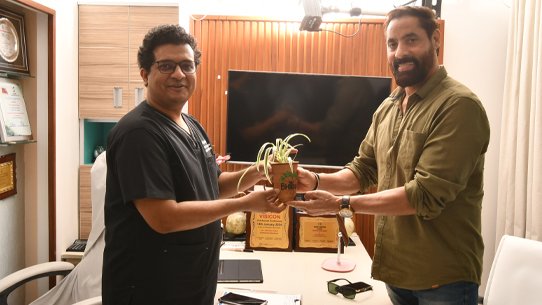In today’s fast-paced world, many people are becoming more conscious about their health and wellness. As a result, there’s a growing trend toward modern nutrition practices that emphasize the importance of healthy eating, portion control, and balancing macronutrients (proteins, fats, and carbohydrates). At the same time, traditional Indian diets, which have been passed down through generations, remain an important part of the culture and are known for their rich flavors, spices, and diverse food combinations.
Balancing these two approaches – traditional Indian diets and modern nutrition trends – can be a bit tricky, but it’s not impossible. In fact, with a little knowledge and a few simple changes, it’s possible to merge the best of both worlds for a healthy, sustainable, and enjoyable eating pattern.
1. Understanding Traditional Indian Diets
Traditional Indian diets are diverse, reflecting the rich cultural and regional diversity of the country. They typically emphasize whole, natural foods like grains, vegetables, legumes, dairy, and fruits. Indian meals often feature a variety of spices, which not only enhance flavor but also offer health benefits. For example, turmeric, cumin, coriander, and ginger are commonly used in cooking, and these spices have anti-inflammatory and digestive properties.
Traditional meals are generally served in a balanced way, with a combination of carbs (rice, roti), proteins (dal, legumes), vegetables, and fats (ghee, oils). A typical Indian meal also includes a variety of flavors – sweet, sour, salty, bitter, and astringent – that stimulate digestion and provide a range of nutrients.
However, in the modern world, some elements of traditional Indian eating habits have been lost or altered. For instance, high levels of refined sugar, deep-fried snacks, and excessive use of processed foods have become more common, which can lead to health issues such as obesity, diabetes, and high blood pressure.
2. The Rise of Modern Nutrition Trends
Modern nutrition trends focus on providing the body with the right nutrients for optimal health. These trends promote the consumption of whole, nutrient-dense foods, while minimizing processed foods, refined sugars, and unhealthy fats. Some popular nutrition trends today include:
- Plant-based eating: Many people are choosing plant-based diets, focusing on vegetables, fruits, grains, legumes, nuts, and seeds, and reducing or eliminating animal products.
- Low-carb or keto diets: These diets limit carbohydrate intake and focus on fats and proteins for energy, to achieve weight loss and improve blood sugar levels.
- Intermittent fasting: This eating pattern involves alternating between periods of eating and fasting, to improve metabolism, reduce inflammation, and enhancing fat loss.
- Superfoods: Foods like quinoa, kale, chia seeds, and avocados have gained popularity due to their high nutrient content.
While these trends have their benefits, it’s important to approach them in a balanced way, especially when adapting them to the traditional Indian diet, which may already be rich in some of these nutrient-dense foods.
3. Finding the Balance Between the Two
Now that we understand both traditional Indian diets and modern nutrition trends, the key to achieving a healthy, balanced diet is to combine the best aspects of both. Here’s how you can do that:
a) Incorporate More Plant-Based Foods
Traditional Indian diets are already rich in plant-based foods such as vegetables, fruits, lentils (dal), beans, and whole grains like millet, rice, and wheat. Modern nutrition trends encourage even more plant-based eating, so why not take advantage of this by increasing your intake of plant-based meals? Opt for more vegetable-based curries, try adding legumes to your salads, and make sure to include fruits as snacks.
b) Balance Carbs, Proteins, and Fats
One of the core principles of modern nutrition is the balance of macronutrients: carbs, proteins, and fats. Traditional Indian diets often include a good mix of these, but sometimes the proportion of carbohydrates (rice, roti, potatoes) can be too high, while the protein intake (dal, legumes, dairy) might be low.
To achieve better balance, reduce excessive portions of white rice or parathas, and focus on whole grains like brown rice, quinoa, or whole wheat. Incorporate more protein-rich foods such as lentils, beans, tofu, paneer, or even lean meats if you’re non-vegetarian. For healthy fats, use moderate amounts of ghee or coconut oil, and try to include more nuts, seeds, and avocados.
c) Use Spices Wisely
The spices used in traditional Indian cooking – such as turmeric, cumin, coriander, and ginger – are not only flavorful but also packed with health benefits. Modern nutrition emphasizes the importance of anti-inflammatory foods, and Indian spices are excellent for this. Continue using these spices liberally, but also consider adding modern superfoods like flaxseeds, chia seeds, and spirulina to your meals.
d) Minimize Processed and Fried Foods
Traditional Indian diets, when prepared at home, are typically free of processed foods. However, modern trends, such as the rise of packaged snacks and convenience foods, can undermine the health benefits of traditional eating. To align with modern nutrition principles, reduce the intake of deep-fried snacks (like samosas or pakoras) and instead opt for healthier cooking methods like steaming, grilling, or sautéing with minimal oil.
You can replace fried snacks with healthier alternatives like roasted chickpeas, vegetable chips, or baked samosas made with whole wheat.
e) Practice Mindful Eating and Portion Control
Modern nutrition stresses the importance of mindful eating and portion control. Traditional Indian meals often consist of multiple dishes, and it’s easy to overeat, especially during festivals or family gatherings. To balance this, try to focus on eating slowly and savoring each bite. Aim for smaller, balanced meals that provide energy without overloading your system.
You can also adopt portion control practices by using smaller plates and being mindful of how much you serve yourself. Keep in mind that eating a variety of foods in moderation is the key to a healthy diet.
4. Embrace Flexibility
Balancing traditional Indian diets with modern nutrition trends is not about rigid rules. It’s about finding what works best for your health, lifestyle, and preferences. If you enjoy traditional meals like dal, roti, and sabzi, continue eating them, but try to make healthier versions when possible. You can also incorporate aspects of modern trends, such as eating more plant-based foods or cutting down on sugar, without completely abandoning your cultural favorites.
Remember that balance is the key to long-term health and happiness. A flexible approach will allow you to enjoy the best of both worlds – nourishing your body with the goodness of traditional Indian food while embracing the benefits of modern nutrition.
Final Thoughts
Balancing traditional Indian diets with modern nutrition trends is all about making smart choices and creating a diet that works for you. By combining the wisdom of traditional eating with the insights from modern nutrition, you can enjoy a wide range of healthy, flavorful, and satisfying meals. The goal is not perfection, but rather a sustainable approach to eating that supports your health and well-being.














